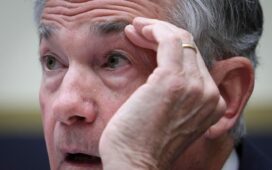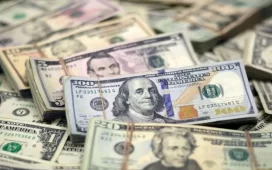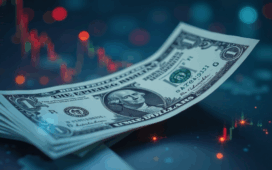A dollar gauge is on track for its worst performance during the first 100 days of a US presidency in data going back to the Nixon era, when America abandoned the gold standard and switched to a free-floating exchange rate.
The US dollar index has lost about 9 per cent between Jan 20 – when Donald Trump returned to the White House – and Apr 25, putting it on course for the biggest loss through the end of the month since at least 1973. The president’s first 100 days in office in recent decades have been marked by strength in the country’s currency, with returns averaging close to 0.9 per cent between 1973, when Richard Nixon began his second term, and 2021, when Joe Biden took office.
Meant as a temporary measure, the so-called Nixon shock of 1971 caused the US dollar to drop, effectively ending the Bretton Woods system of fixed exchange rates established after the end of the World War II.
Trump during the early innings of his second presidency followed through on various campaign pledges, introducing new tariffs and dialling up the rhetoric against China and other US trading partners. His tariff policy has led investors to pile into assets outside the US, weakening the greenback and lifting other currencies alongside gold. The euro, Swiss franc and yen have risen more than 8 per cent each against the US dollar since Trump’s return to the presidency.
“The ubiquity of the US dollar and its role in international trade and finance came with deep trust in US institutions, low trade and capital barriers as well as a predictable foreign policy,” said Bipan Rai, a managing director at BMO Global Asset Management. “Now? There are clear signs of erosion which points to a change in global asset allocation trends which don’t favour the US dollar. We sense this is a structural shift,” he said.
Trump’s policy initiatives have also increased the risk of a US recession combined with re-accelerating inflation, limiting the scale of potential interest rate cuts by the Federal Reserve.
BT in your inbox

Start and end each day with the latest news stories and analyses delivered straight to your inbox.
The president’s comments about Fed Chair Jerome Powell – especially his threat to fire him – have put investors on alert, elevating concerns over the US central bank’s independence. Trump later said he had no intention of firing Powell.
UBS Group, as a result, cut its US dollar forecast for the second time in less than two months. Analysts stated that the greenback’s performance hinges on the outcome of the US-China stand-off, which hasn’t seen much progress in recent weeks.
Deutsche Bank last week warned of a structural downtrend for the US dollar in the coming years, which could knock the US currency to its weakest level in more than a decade against the euro.
Speculative traders, including hedge funds and asset managers, have increased their bets against the US dollar in April. The group is the most short dollar since September 2024, with bearish bets on the US currency worth about US$13.9 billion during the week ended Apr 22, according to data from the Commodity Futures Trading Commission. BLOOMBERG





